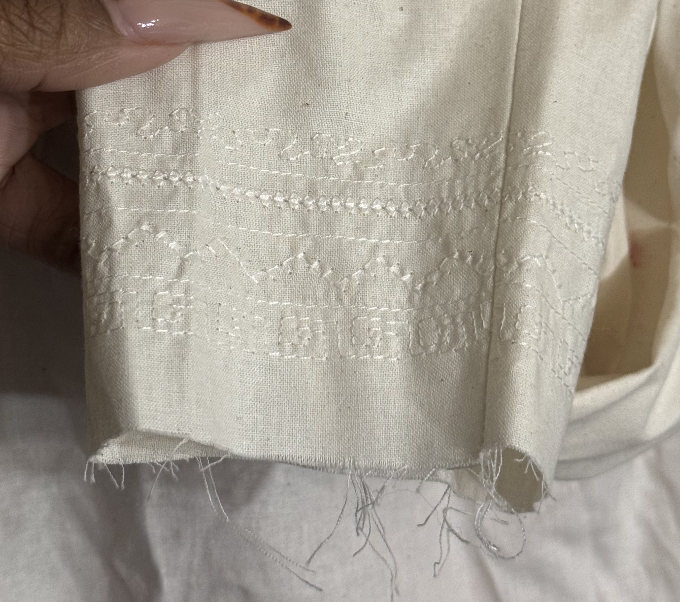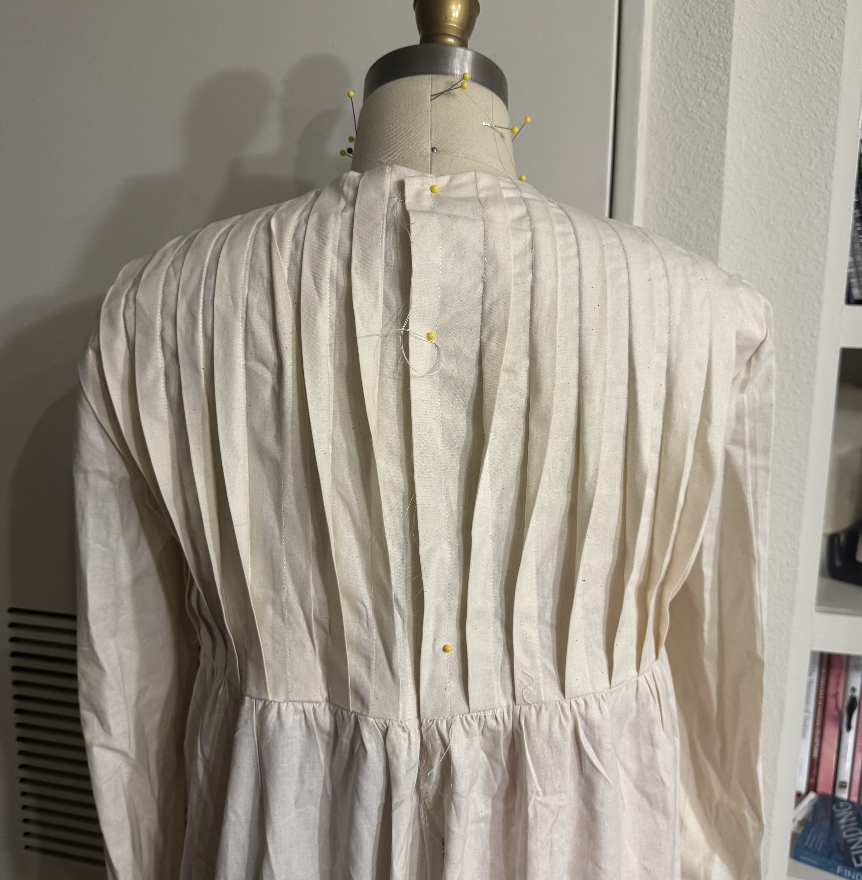Empire Dress
The engineered print was developed in collaboration with Contrado, incorporating four distinct patterns to add depth and visual interest to the final design. To honor the historical context, I selected 100% cotton muslin—a natural fiber commonly used during the period—for the base fabric.
The bodice features undulating pleats and a center-back closure, with a flatlined construction that is topstitched at the neckline for a clean finish. While the sleeve foundation is simple, the cuffs are richly embellished with freehand embroidery—traditionally known as whitework—and accented with beadwork for added texture and ornamentation.
The gathered three-gore skirt includes four tiered hems, alternating between undulating pleats and lace panels to create a delicate rhythm of movement and contrast. To cinch the waist, I designed a handmade belt using African wooden beads, threaded with ribbon for an adjustable fit.
















Process
Cotton Muslin Empire Dress, c. 1810
This gown is a modern reinterpretation of an early 19th-century cotton muslin empire dress with poufs, originally dated to around 1810 and housed in the LSU Textile and Costume Museum (LSU TCM) collection. Crafted from lightweight cotton muslin and gauze, the design features delicate poufs along the skirt hem and sleeve cuffs, echoing the romantic silhouettes of the Regency era.
To explore the LSU Textile and Costume Museum’s online collection, please click the link below.




















